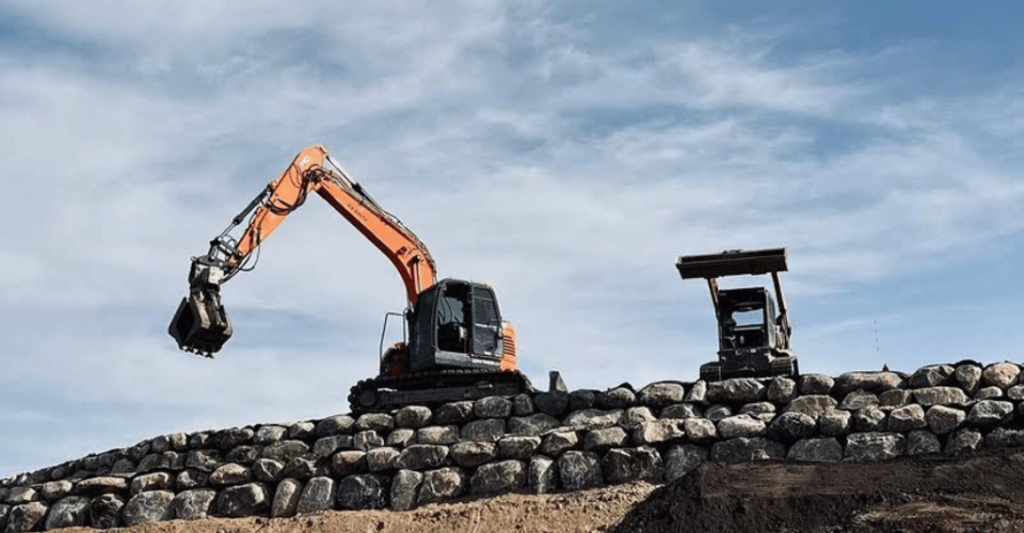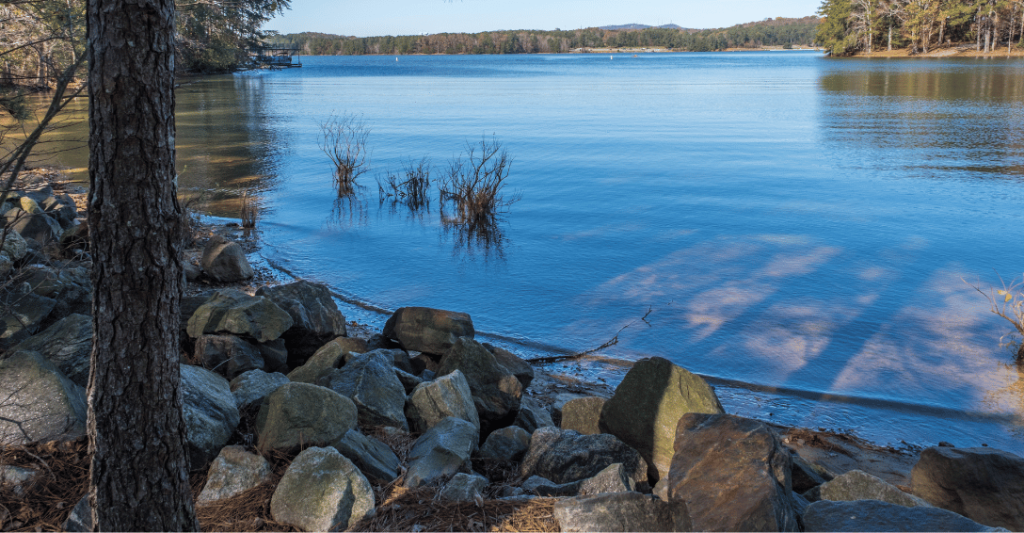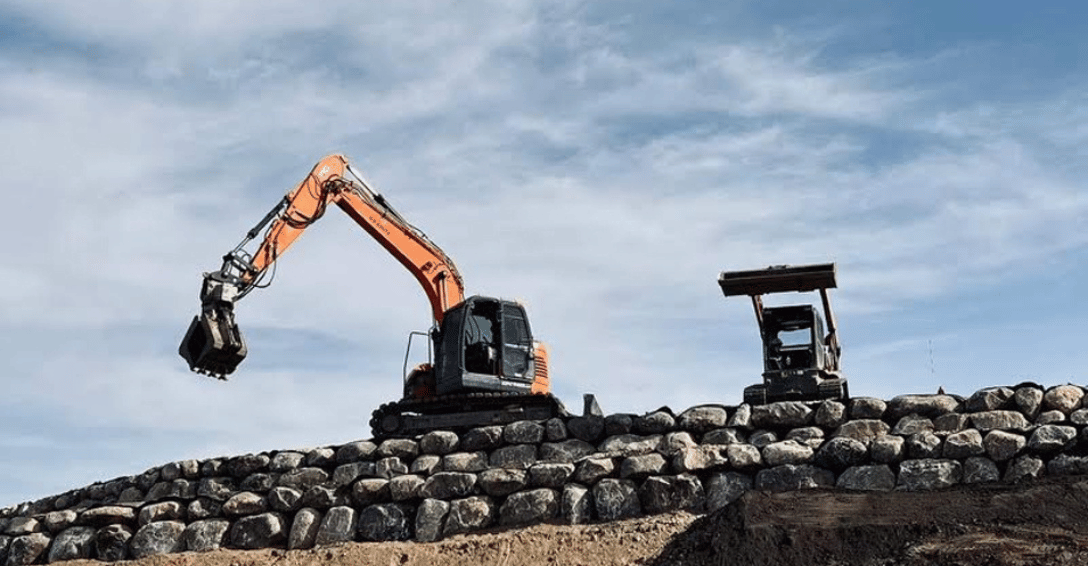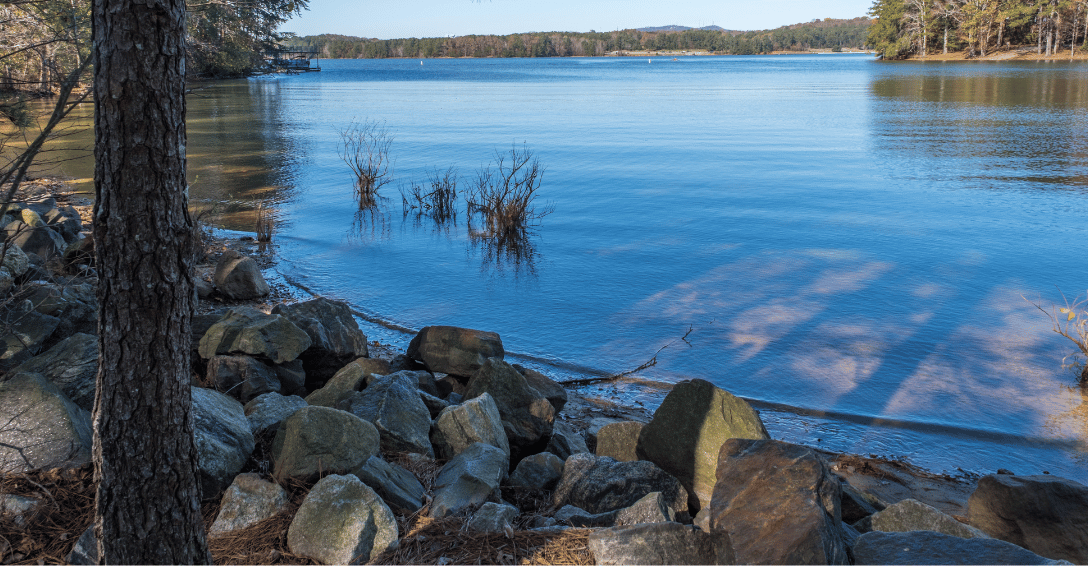Retaining Walls for Waterfront and Lakefront Properties
Living on the waterfront or lakefront can be a dream come true, but it also comes with its own set of challenges. One of the biggest challenges is erosion caused by water. Retaining walls are an effective solution to prevent erosion and protect your property from water damage. In this article, we will discuss everything you need to know about building retaining walls for your waterfront or lakefront property.
What are Retaining Walls?
Retaining walls are structures built to hold back soil and prevent erosion. They are commonly used in areas with steep slopes or uneven terrain. Retaining walls can be made of various materials such as concrete, stone, brick, or wood. They work by redistributing the pressure of the soil and water, preventing it from causing damage to your property.


Types of Retaining Walls
There are several types of retaining walls, including:
- Gravity walls
- Sheet pile walls
- Cantilever walls
- Anchored walls
- Reinforced soil walls
Why Build Retaining Walls for Waterfront and Lakefront Properties?
Retaining walls are essential for waterfront and lakefront properties because they prevent erosion and protect your property from water damage. Without retaining walls, the soil can erode, causing your property to sink or collapse. Retaining walls also help to stabilize the soil, preventing landslides and other hazards.
How Retaining Walls Prevent Erosion
Retaining walls work by redistributing the pressure of the soil and water. They hold back the soil, preventing it from being washed away by water. Retaining walls also help to slow down the flow of water, reducing its erosive power. By preventing erosion, retaining walls protect your property from damage and help to maintain its value.
How Retaining Walls Protect Your Property from Water Damage
Retaining walls protect your property from water damage by holding back the water and preventing it from flooding your property. They also help to redirect the flow of water away from your property, reducing the risk of flooding. By protecting your property from water damage, retaining walls help to ensure that your property remains safe and secure.
Factors to Consider When Building Retaining Walls
When building retaining walls, there are several factors to consider:
Soil Type
The type of soil on your property will affect the design and construction of your retaining wall. Some soils are more stable than others and require different types of retaining walls. It is important to have a soil analysis done before building your retaining wall to ensure that it is designed to withstand the soil conditions on your property.
Slope of the Land
The slope of the land will also affect the design and construction of your retaining wall. Steep slopes require taller and stronger retaining walls than gentle slopes. It is important to take the slope of the land into consideration when designing your retaining wall.
Water Drainage
Water drainage is an important factor to consider when building retaining walls. Poor drainage can cause water to build up behind the retaining wall, putting pressure on it and causing it to fail. It is important to design your retaining wall with proper drainage systems to prevent water buildup.
Building Codes and Permits
Building codes and permits vary by location, so it is important to check with your local building department before building your retaining wall. You may need a permit to build a retaining wall, and there may be specific building codes that you need to follow.
Designing Your Retaining Wall
Designing your retaining wall is an important step in the construction process. Here are some things to consider:
Choosing the Right Materials
The materials you choose for your retaining wall will affect its strength, durability, and appearance. Some common materials for retaining walls include concrete, stone, brick, and wood. It is important to choose materials that are appropriate for the soil conditions on your property and that will complement the style of your home.
Choosing the Right Height and Length
The height and length of your retaining wall will depend on the slope of the land and the amount of soil that needs to be held back. It is important to design your retaining wall with the right height and length to ensure that it is strong enough to hold back the soil and water.
Adding Drainage Systems
Adding drainage systems to your retaining wall is important to prevent water buildup behind the wall. Drainage systems can include weep holes, gravel layers, and perforated pipes. It is important to design your drainage system to match the soil conditions on your property.
Building Your Retaining Wall
Building your retaining wall requires careful planning and attention to detail. Here are some steps to follow:
Steps to Building a Retaining Wall
- Prepare the site by removing any vegetation and debris.
- Excavate the soil to the depth and width required for your retaining wall.
- Install a base layer of gravel or crushed stone to provide a stable foundation.
- Build the retaining wall using the materials and design you have chosen.
- Add drainage systems to prevent water buildup behind the wall.
- Backfill the soil behind the wall and compact it to provide additional stability.
Tools and Equipment Needed
The tools and equipment you will need to build your retaining wall will depend on the materials and design you have chosen. Some common tools and equipment include shovels, levels, masonry saws, and compactors. It is important to have the right tools and equipment to ensure that your retaining wall is built correctly.
Safety Precautions
Building a retaining wall can be dangerous if proper safety precautions are not taken. It is important to wear protective gear such as gloves, safety glasses, and hard hats. It is also important to follow all safety guidelines and instructions for the tools and equipment you are using.
Maintaining Your Retaining Wall
Maintaining your retaining wall is important to ensure that it remains strong and stable. Here are some things to keep in mind:
Regular Inspections
Regular inspections of your retaining wall can help you identify any issues before they become major problems. Inspect your retaining wall at least once a year for signs of damage or wear and tear.
Cleaning and Repairs
Cleaning and repairing your retaining wall can help to extend its lifespan. Clean your retaining wall regularly to remove any debris or vegetation that may be growing on it. Repair any cracks or damage as soon as possible to prevent further damage.
When to Call a Professional
If you are unsure about how to maintain your retaining wall or if you notice any signs of damage, it is important to call a professional. A professional can inspect your retaining wall and make any necessary repairs to ensure that it remains strong and stable.
Frequently Asked Questions
The cost of building a retaining wall will depend on several factors, including the materials used, the height and length of the wall, and the complexity of the design. On average, the cost of building a retaining wall can range from $3,000 to $10,000.
The time it takes to build a retaining wall will depend on the size and complexity of the wall. On average, it can take anywhere from a few days to a few weeks to build a retaining wall.
Building a retaining wall can be a complex and challenging project. While it is possible to build a retaining wall yourself, it is recommended that you hire a professional to ensure that it is built correctly and safely.
The best materials for building a retaining wall will depend on the soil conditions on your property and the style of your home. Some common materials for retaining walls include concrete, stone, brick, and wood.
You should inspect your retaining wall regularly for signs of damage or wear and tear. Signs that your retaining wall may need repairs include cracks, bulges, or leaning.
Yes, you can add plants or landscaping to your retaining wall. However, it is important to choose plants that are appropriate for the soil conditions on your property and that will not damage the retaining wall.
The lifespan of your retaining wall will depend on several factors, including the materials used, the design, and the soil conditions on your property. On average, a well-built retaining wall can last anywhere from 20 to 50 years.


